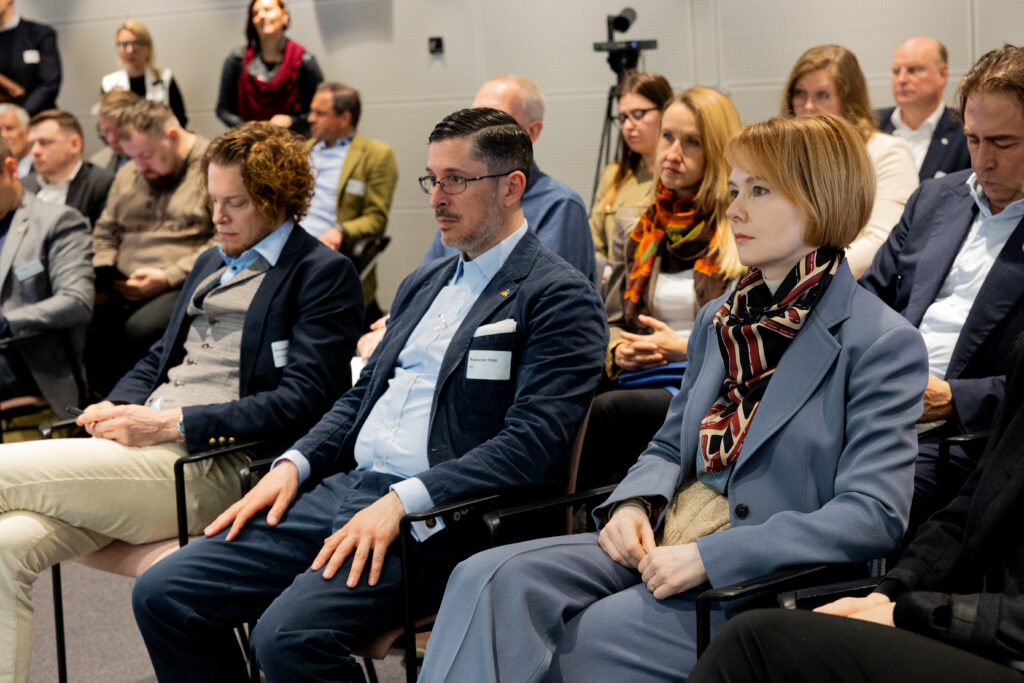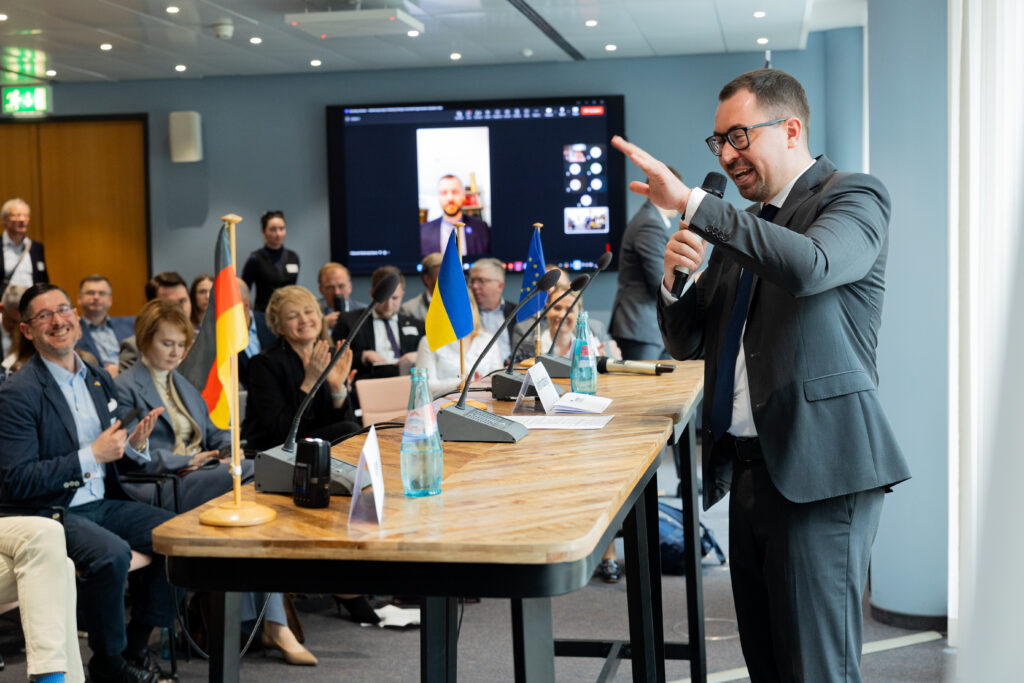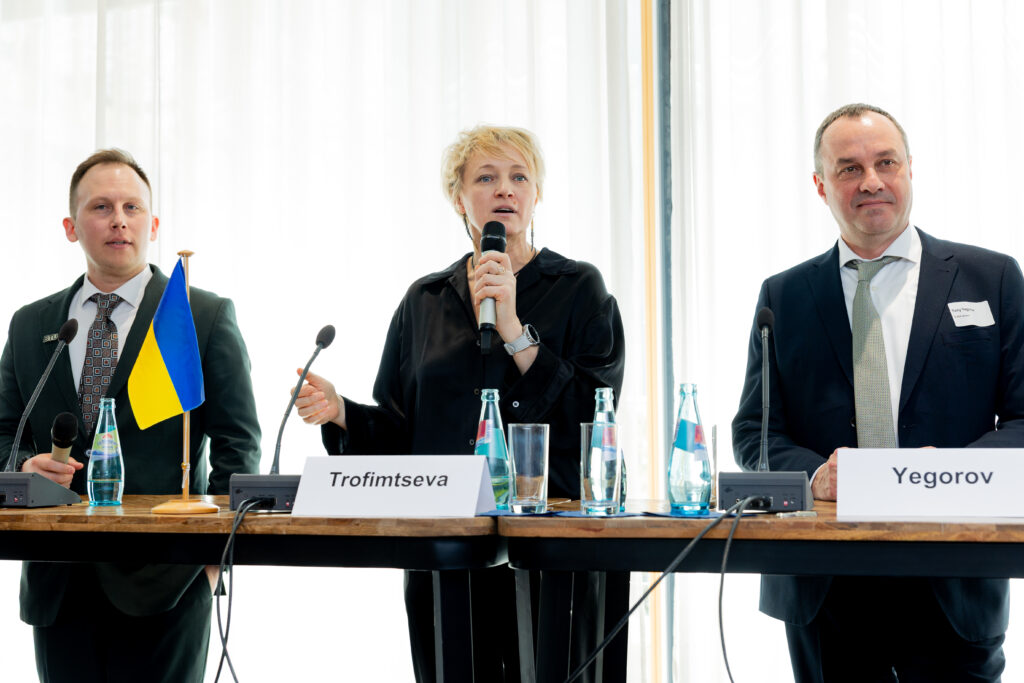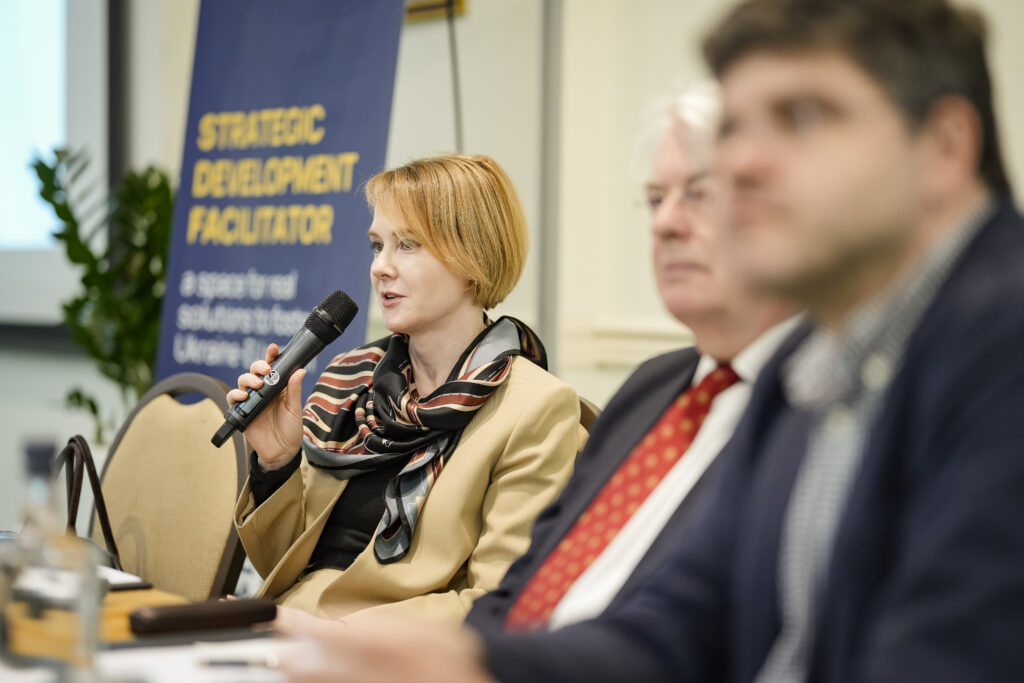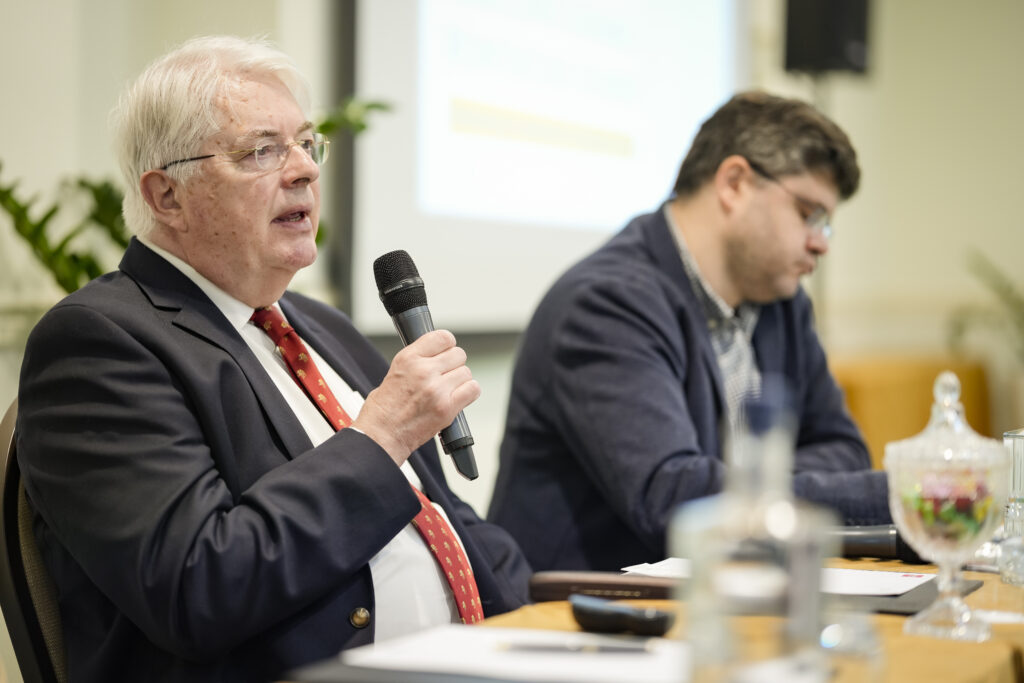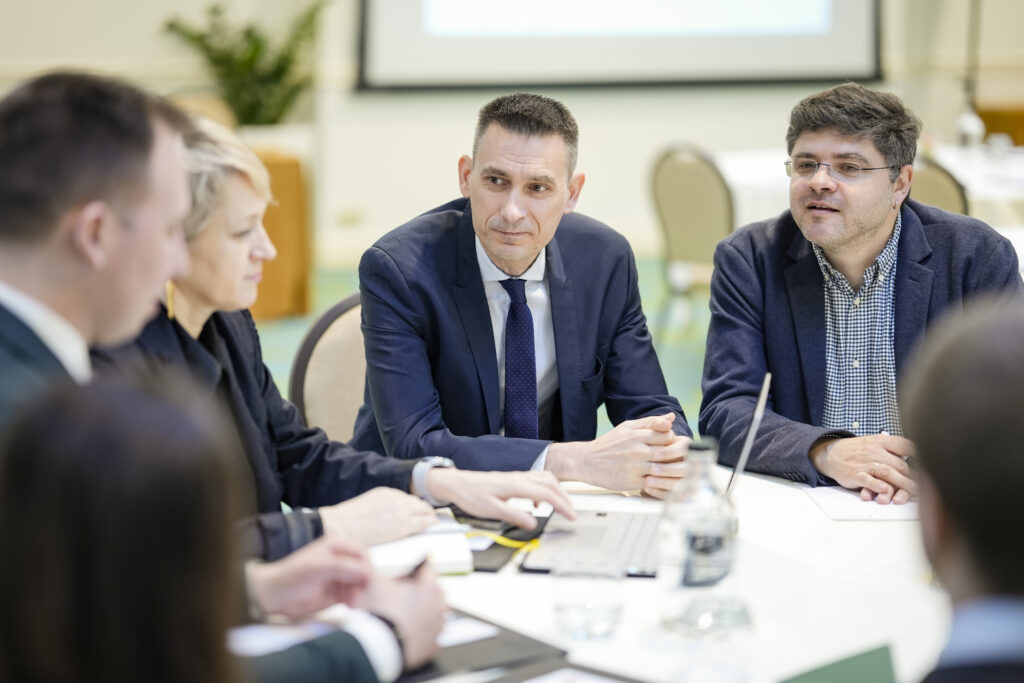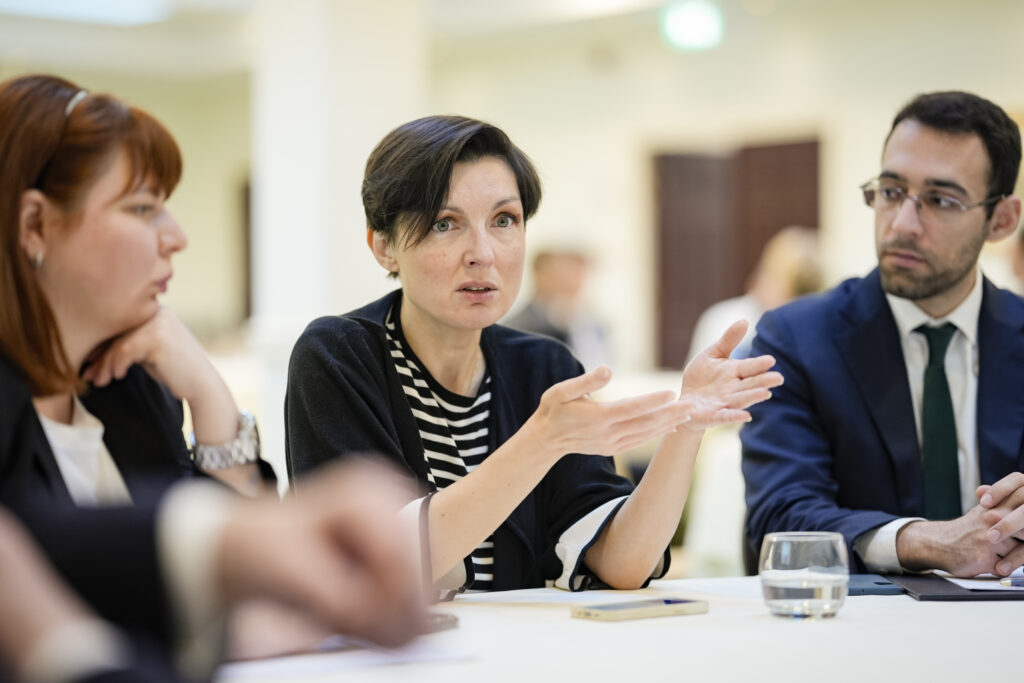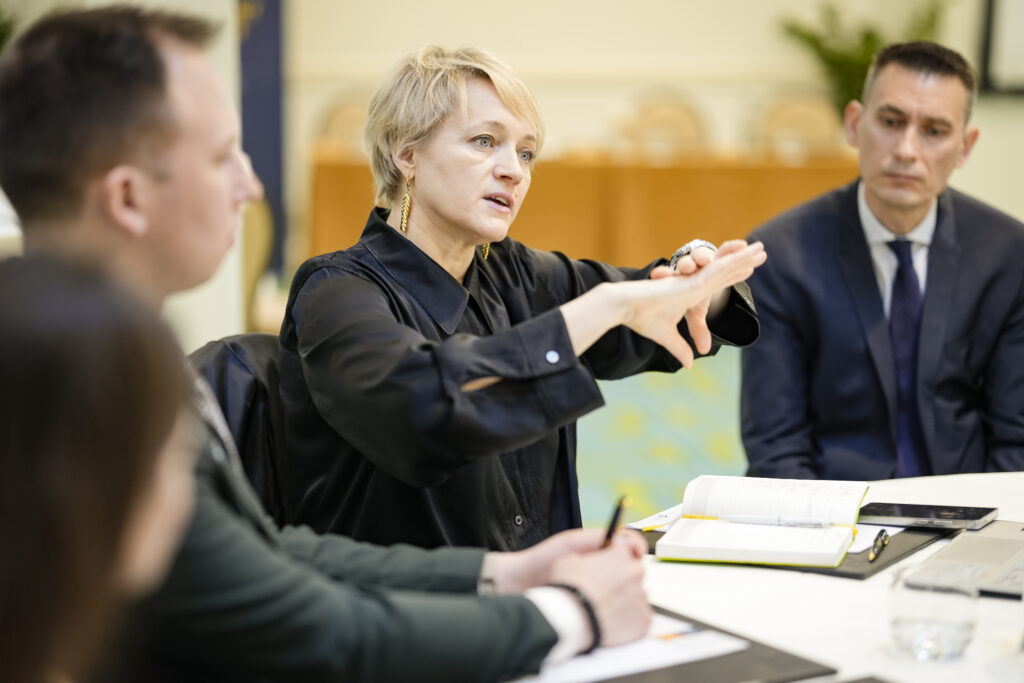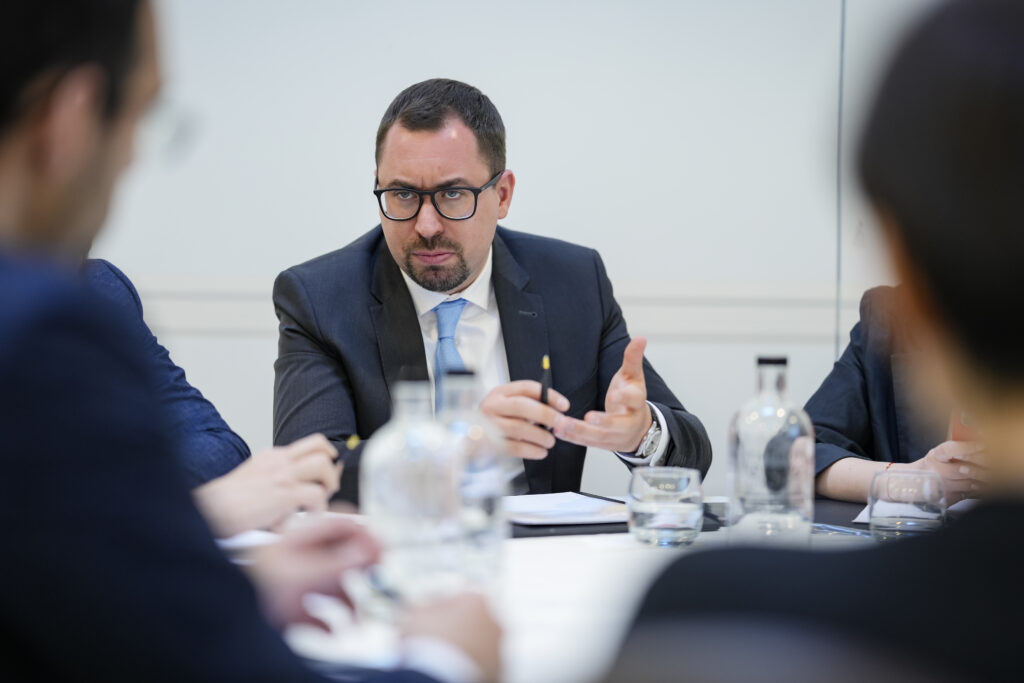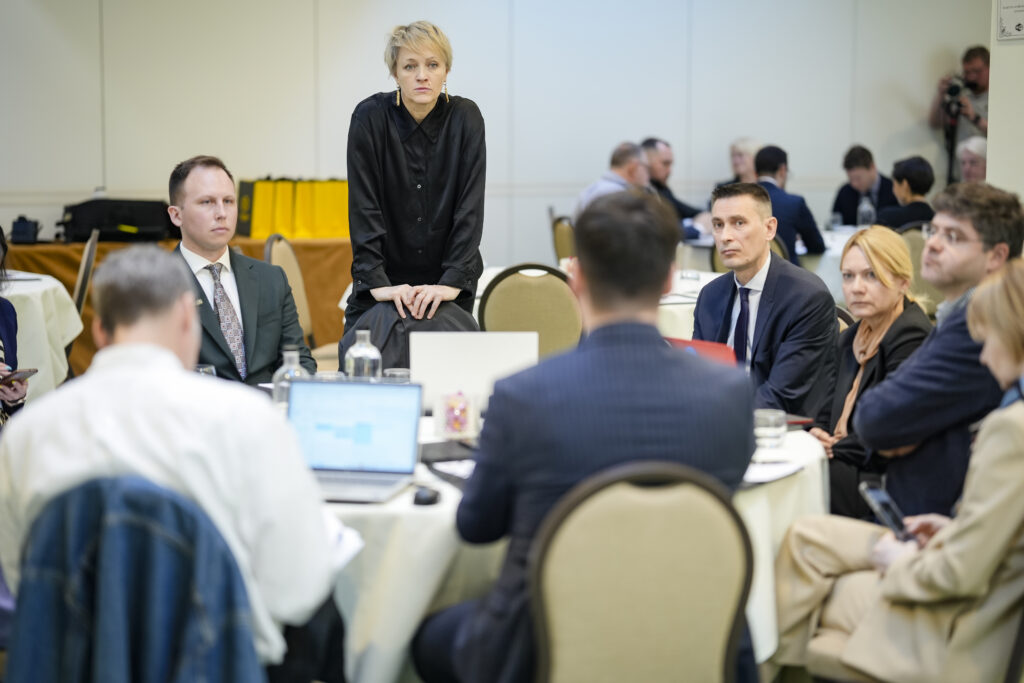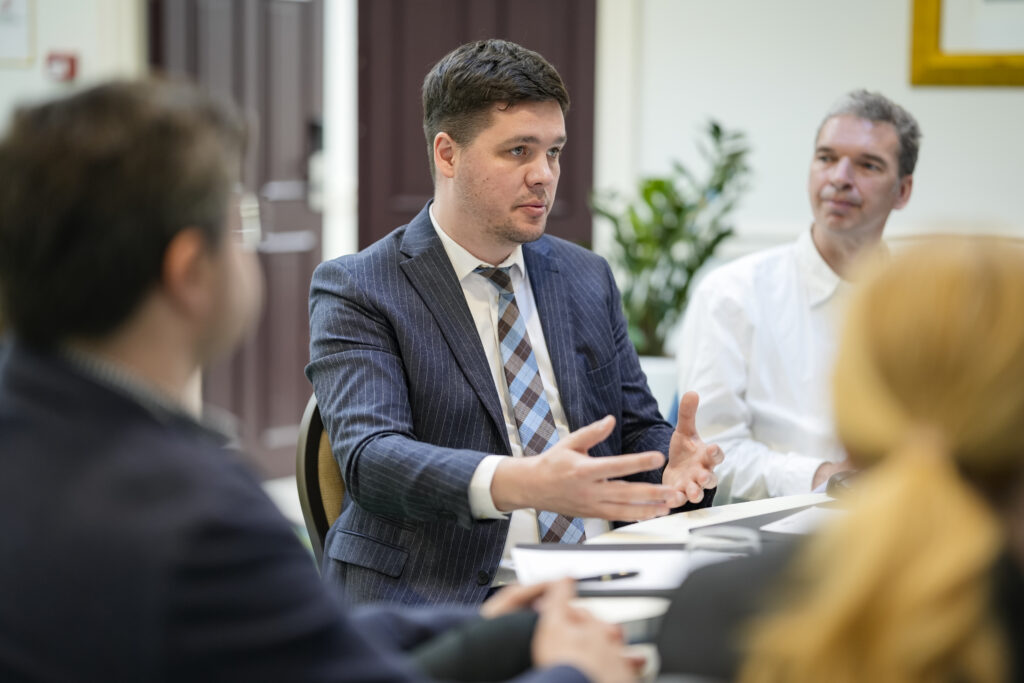“Rebuilding Ukraine – Reinforcing Europe”: Key insights from the Strategic Dialogue
UAFP Events
Ukraine must rethink its post-war recovery strategy. This moment presents a unique opportunity to synchronize Ukrainian and European capabilities to overcome economic and security challenges. At the same time, our focus should extend beyond immediate problems to identifying solutions that ensure sustainable growth for both Ukraine and Europe over the next 5-10 years.
“Strengthening the security of the European continent, achieving energy stability of Ukraine and Europe, and mutual integration of the agricultural sector are exactly what the joint development strategy of the EU and Ukraine should be built on. It is worth planning a future in which Ukraine should become a full-fledged partner of Europe in achieving strategic autonomy and restoring the competitiveness of the EU. To do this, we must, together with the European community, rethink the direction of movement,” said Lana Zerkal, a member of the Coordination Council of the Ukraine Facility Platform, at the opening of the Strategic Dialogue in Berlin.
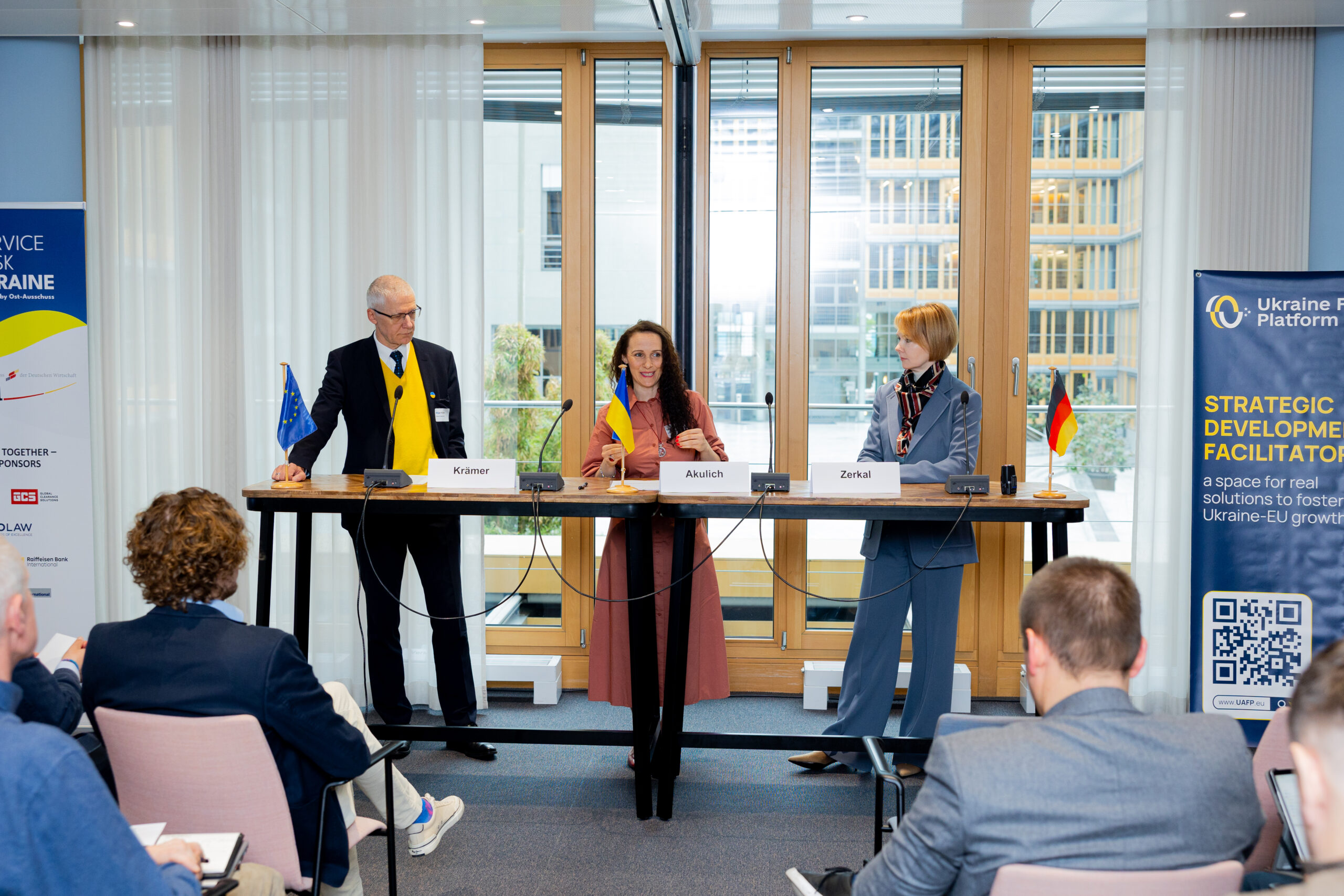
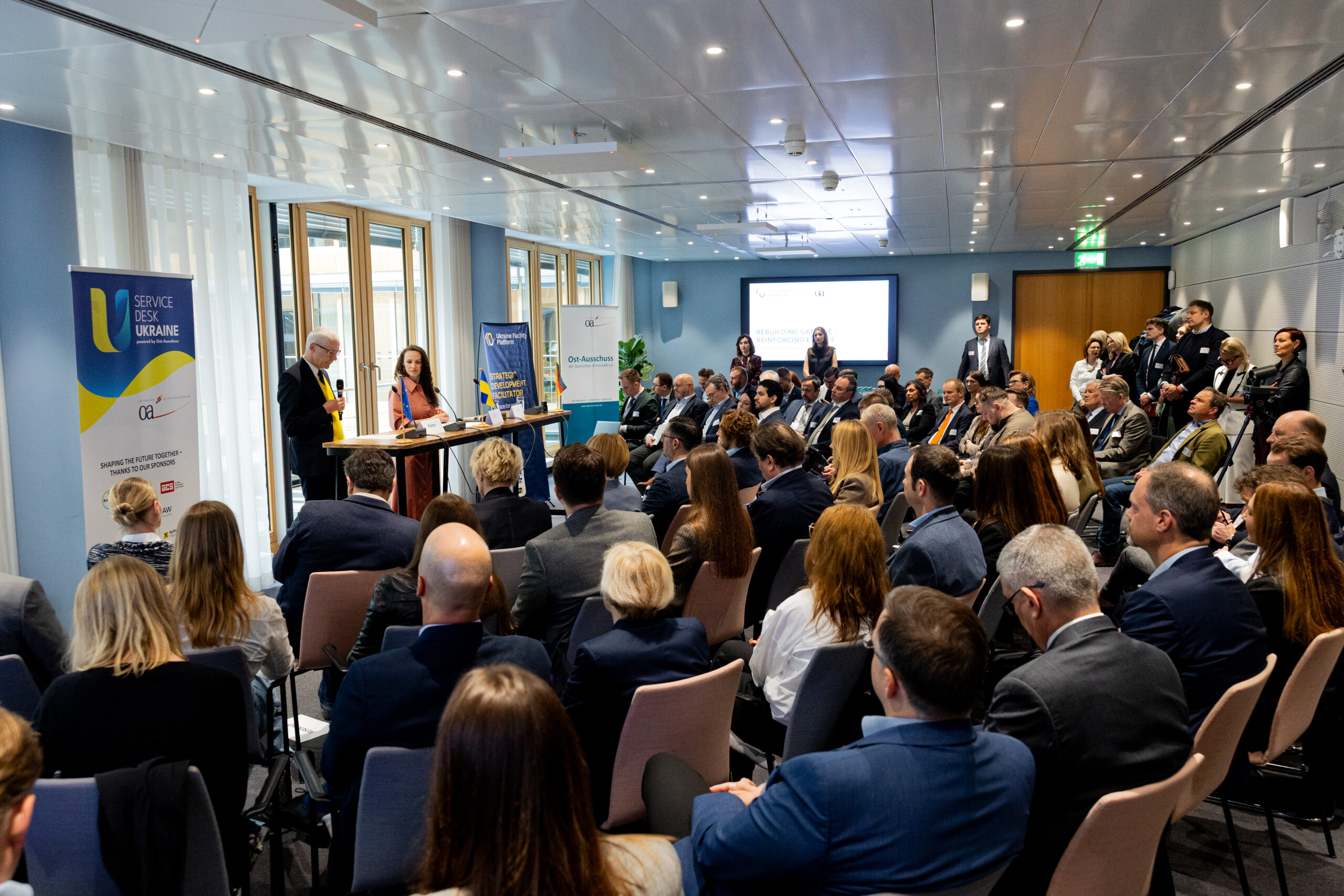
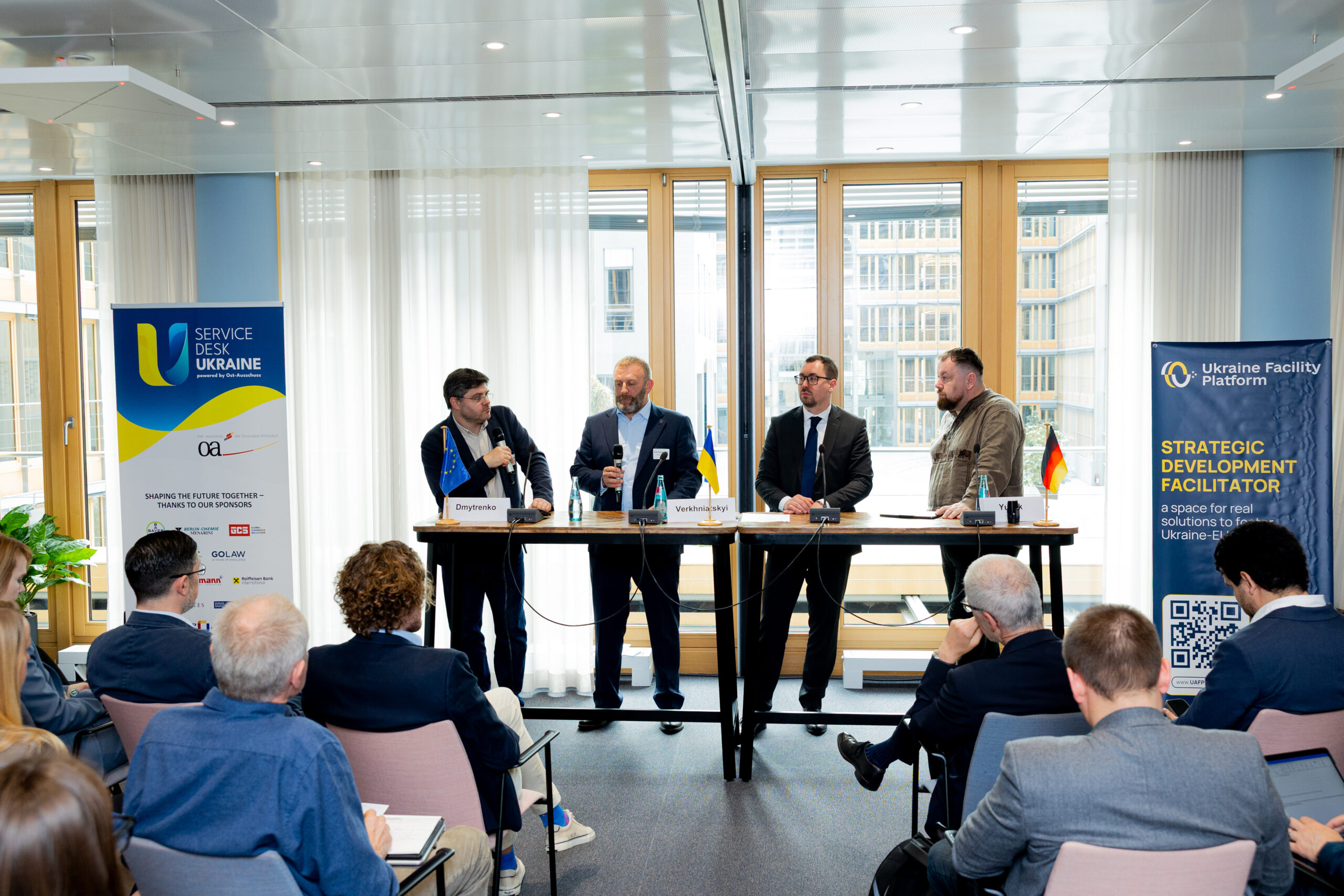
📌 The Strategic Dialogue “Rebuilding Ukraine – Reinforcing Europe”, co-organised by the Ukraine Facility Platform (UAFP) and the Ost-Ausschuss der Deutschen Wirtschaft (German Eastern Business Association), took place on 25 April in Berlin and 28 April in Brussels. The event brought together government officials, business leaders, and civil society representatives to identify common solutions and explore areas for collaboration – from energy resilience and defence integration to joint development of the agricultural sector.
Here are the key insights from each of the panels.
STRATEGIC AGRIFOOD
How can Ukraine’s agricultural sector integrate into the European market and contribute to Europe’s strategic autonomy?
- Develop a joint roadmap with European partners to align Ukraine with the core principles of the EU’s Common Agricultural Policy (CAP).
- Direct both EU and Ukrainian investments toward joint ventures in Ukraine’s bioeconomy, and sustainable processing.
- Provide Ukrainian farmers with access to EU digital platforms.
- Implement joint pilot projects to build trust and foster long-term cooperation.
“We must move forward together under a revised Green Deal – transitioning from rigid compliance to a system of incentives. Another key priority is reducing dependency on third countries. This means cooperating on the development of protein processing, biofuel production, and environmentally sustainable products and resources,” – said Olga Trofimtseva, Agriculture & Biodiversity sector coordinator at the UAFP.
What are the key barriers – and what requires joint action?
Ukrainian producers currently face several obstacles that hinder deeper integration into the European agri-food system:
- There is a lack of practical guidance and support for meeting the EU Green Deal, Farm-to-Fork Strategy, and the Common Agricultural Policy (CAP) requirements.
- Organic and sanitary certification processes remain expensive, complex, and largely inaccessible for small and medium-sized Ukrainian producers.
- Ukraine exports a high volume of raw agricultural products but has limited domestic processing capacity, which results in lost added value and increased logistics costs.
- European investors face unclear and non-transparent conditions regarding capital protection and banking criteria.
- There is no consistent dialogue between European companies, Ukrainian producers, and regulatory bodies.
Despite these challenges, Ukraine already holds significant potential for closer cooperation with European partners. According to Ukraine’s Deputy Minister of Agrarian Policy Oksana Osmachko, agriculture accounts for nearly 16% of the country’s GDP. This opens clear opportunities for partnership, as Ukraine can contribute to advancing Europe’s competitiveness goals.
STRATEGIC DEFENCE
Integrating Ukraine’s defence industrial base into the European security architecture will support the restoration of supply chains and the scaling up of military production across Europe. To make this a reality, EU partners can draw on Ukraine’s strategic strengths: a high level of adaptability, rapid innovation cycles, and extensive real-world experience in developing and testing advanced defence technologies.
“Sustained dialogue between Ukrainian and EU defence companies and key stakeholders is essential to building industrial ties and overcoming regulatory barriers,” said Pavlo Verkhniatskyy, Managing Partner at COSA and member of the UAFP Business Council.
What is holding back deeper EU–Ukraine defence cooperation?
- Lack of long-term contracts that would provide stability and planning certainty for defence manufacturers.
- Outdated frameworks for intellectual property rights and technology transfer.
- Export restrictions and capital movement limitations.
- Lack of state-level strategic vision for Ukraine’s defence sector development .
- Absence of a unified coordination centre in a sector already comprising over 800 active companies.
- Fragmented and inconsistent dialogue between Ukrainian and European defence industries.
What practical solutions should Ukraine and the EU work on together?
- Establishing a dedicated regulatory framework for joint financing, certification, and long-term contracts.
- Joint defence fund for R&D and component substitution.
- Integrating Ukraine’s defence industry into European supply and production chains.
- Expanding IP agreements, securing investments, and providing access to Horizon Europe and EDIP defence programmes.
- Building structured dialogue between industry, defence institutions, and regulators.
Today, Ukraine already offers fast production and innovation cycles, a high degree of adaptability, and flexibility in technical design. We have experience in scaling technologies such as drones, electronic warfare systems, strike platforms, armoured vehicles, and munitions – all tested under full-scale war conditions. We also bring proven expertise in reducing production costs without compromising effectiveness. These are strategic advantages that can significantly enhance Europe’s long-term security.
STRATEGIC ENERGY
What are the common goals of Ukraine and Europe in energy development?
- Bolster energy security of both Ukraine and Europe.
- Diversify energy sources and reduce dependency on imported natural gas.
- Empower local communities through sustainable income generation, job creation, and affordable energy access.
- Enhance Ukraine’s investment appeal through transparent, bankable energy projects.
- Strengthen Europe’s resilience by integrating new generation capacities.
Ukraine must abandon the “linear approach” to rebuilding its energy infrastructure. A strategy focused solely on restoring damaged assets is inefficient – it risks increasing dependence on imported natural gas and may lead to fragmented development of generation capacities disconnected from the national grid.
“Ukraine’s strategy for addressing energy deficits should prioritize strengthening grid flexibility, increasing the capacity of communities and businesses to implement their own energy projects, and deepening Ukrainian-European energy market integration,” emphasized Oleksandr Vizir, Energy & Climate sector coordinator at the UAFP.
Europe is rethinking its energy policy and working to adjust the course of the Green Deal. This shift is driven by several factors: vulnerabilities exposed by the full-scale war in Ukraine, recent blackouts in Spain and Portugal, and changes in U.S. foreign policy. For Ukraine, this opens a window of opportunity to become fully integrated into Europe’s evolving energy framework.
What solutions are on the table?
1. Decentralising generation to strengthen energy resilience. Ukraine needs to add 13 GW of new capacity in 3–5 years, prioritising small-scale (≤10 MW) wind, solar, biomass, and biogas, backed by gas plants and storage systems.
2. Empowering communities in industrial regions. Investments in clean energy for municipalities, especially in industrial zones, will improve autonomy, lower electricity costs, and enhance local energy security.
3. Reintegrating with European markets. Aligning with EU technologies and infrastructure will help Ukraine restore its net-exporter role and support Europe’s energy diversification goals.
How can this be implemented in practice?
The Ukraine Facility Platform (UAFP) has developed the Collaborative Effort Toolkit – a practical framework for coordinated action among government institutions, local communities, the private sector, and international financial organisations. The Toolkit includes three core elements:
- Regulatory coordination between authorities, businesses, and communities to remove bureaucratic barriers and enable investment in new energy infrastructure, ensuring alignment with European market requirements.
- Capacity building for municipalities through training and technical assistance to help communities design bankable energy projects tailored to their specific needs and eligible for financing.
- Targeted funding from international financial institutions (IFIs) and the Ukraine Facility instrument to support local energy projects with the potential for national-scale replication and impact.
